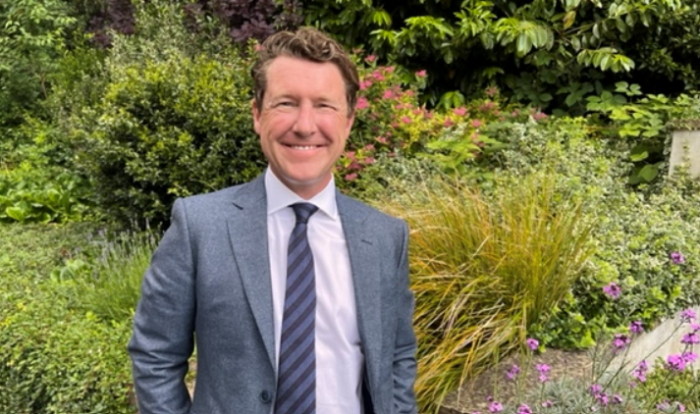Long wait times for NHS treatment or a lack of treatment availability continues to be the main driving force for patients to go private, according to research from the Private Healthcare Information Network (PHIN).
However, more flexibility, choice of facilities and the availability of different treatment options are also contributing to growth in the sector.
The research found NHS waiting lists or NHS treatment being unavailable (71%) were the main influences for people who have received treatment from a private healthcare service in past three years or for those who would consider doing so in next three years.
However, choice was also a factor as respondents listed greater flexibility (40%), better facilities (35%) and the availability of different treatment options (31%) among the choice-led reasons contributing to growth in the sector.
Patients said they consulted multiple sources of information before making their healthcare choices, with 51% citing the “significantly persuasive” value of a recommendation from a friend, family member or colleague.
When choosing a hospital, for 58% location was the largest determinant, while when researching private healthcare, top topics emerged as hospitals (54%) and procedures (52%).
Being treated abroad did not appear to be a consideration for patients surveyed as an overwhelming majority (84%) had not considered such treatment.
The research included a website survey answered by 10,000 people, qualitative focus groups with 41 participants, and a YouGov representative survey of 2,036 UK adults.
It highlighted that a map of private healthcare with key decision points highlighted would also be valued.
Three in 10 (30%) people surveyed overall were not confident about using private healthcare and 19% of those who had treatment in the past three years were still not confident about navigating through it.
The research indicated this lack of knowledge created anxiety and, for some, the sense that people with better access to information or understanding of the process can obtain faster or better outcomes.
Two thirds want complete choice
When it came to the focus groups, many spoke of their concern if something went wrong in a foreign context without comparable standards and support that patients might find in the UK.
The importance of choice for patients was underlined by the fact that 62% wanted complete choice over their private treatment while 27% wanted limited choice.
But the research also found not all patients had a ‘consumer mindset’ when navigating private healthcare.
As a result, PHIN included guidance in its report to help patients and the sector ensure better communication, understanding and use of the choices that are distinctive to private healthcare.
Patients’ private journeys were found to be very diverse because of their priorities and circumstances.
So too were their appetites for information, which can depend on their physical or emotional state, confidence in handling such information and previous experience in the private sector.
Clarity and completeness of fees
Respondents reported there was a lack of clarity and completeness in how private healthcare costs were represented, particularly the full set of in-hospital fees, as well as financing options – preventing patients from making an informed choice and managing trade-offs.
This was especially true for self-pay patients who felt that costs often seemed opaque, if not misleading.
Emphasising the point, PHIN pointed to its survey of 1,800 people asking whether they found the guidance on PHIN’s website useful, with 81% rating their content as helpful.
The most popular types of content were private healthcare guides, information about PHIN and PHIN’s news articles.
The most-viewed single article was Understanding your consultant’s fees (over 31,000), and of articles viewed at least 5,000 times the highest-rated was Self-funding your private treatment, which 97% found useful.
PHIN also examined the YouGov feedback comparing self-funded against privately insured groupings, with those who are self-funded more likely carry out research related to the procedure itself (59%), versus 50% in the insured population.
More than half (52%) reported they would look at results other patients have had, versus 44% in the insured population. It was similarly noted by a focus group participant that if they were to self-pay, they would perform more research
Patients said consultants should invest in their shop windows, including participation in legally-mandated processes like PHIN and provide information that adds a human touch to their clinical information.
Not as expensive as expected
Dr Ian Gargan, chief executive at PHIN, (pictured) noted that although cost can be a barrier to using the private sector, some focus group participants were surprised it was not as expensive as initially thought.
“They wanted more guidance on base prices and factors that might affect the full cost, which could allow them to make more informed decisions weighing up the health cost against the financial cost,“ he said.
He continued: “With this important research, we have striven to better understand patients’ healthcare journeys, information needs and priorities, expectations and experiences, so that we can better deliver for them through our website.
“We’ve reported record levels of private admissions in the past two years. While this has primarily been driven by the NHS waiting lists, there has always been a demand for private healthcare.
“This new research confirms our view that greater choice is the most significant, non-waiting list related, reason for that.
“We are the independent, government mandated, not-for-profit, organisation that brings transparency to the sector. This research helps us to do just that, and contains recommendations for patients, consultants, hospitals and private medical insurers.”
